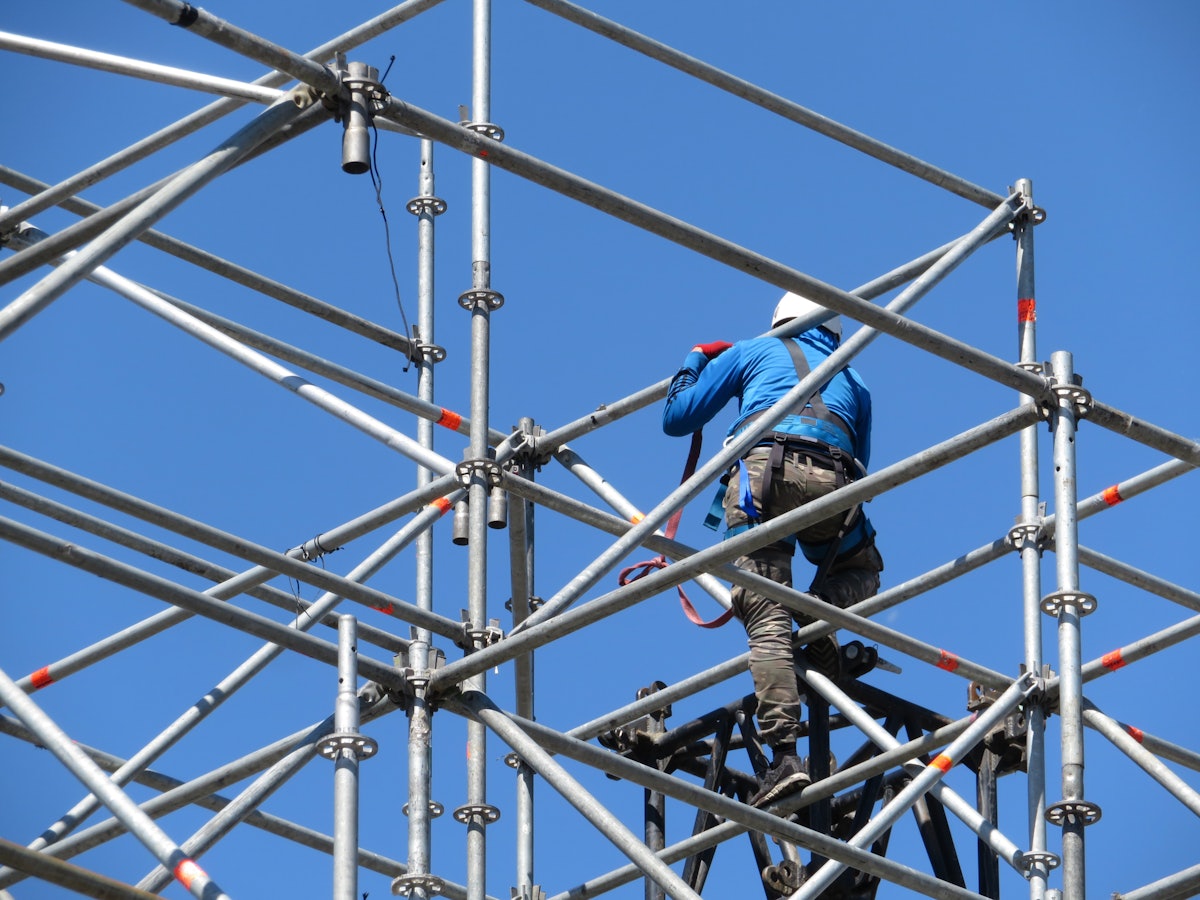Uncovering the Benefits of Scaffolding for Service Providers and Construction Employees
The execution of scaffolding in building projects serves as a critical element for enhancing functional performance and safety. The full range of scaffolding's advantages expands past simple functionality and security-- there are much deeper effects that call for further exploration.

Enhanced Worker Security
Improved employee security is a vital issue in the construction sector, especially when it pertains to making use of scaffolding. Correctly made and mounted scaffolding systems supply essential support for employees running at elevations, dramatically reducing the risk of drops, which are amongst the leading reasons of deaths in construction.
Scaffolding boosts safety and security with its structural stability and layout functions that enable steady work systems. Premium scaffolding products, such as steel or light weight aluminum, deal sturdiness and strength, guaranteeing that they can stand up to the weight and movement of products and workers. Additionally, precaution such as guardrails, toe boards, and access ladders are essential parts that prevent injuries and crashes.
Regular inspections and maintenance of scaffolding are vital to copyright safety criteria. Spending in correct scaffolding solutions is not merely a regulatory need; it is a basic facet of promoting a secure working setting in the building and construction market.
Enhanced Ease Of Access
Accessibility in the building market is vital for promoting performance and performance on task websites. Scaffolding supplies a flexible solution that significantly boosts access for contractors and construction workers. By supplying secure platforms at different heights, scaffolding makes it possible for workers to reach raised locations securely and effectively, lowering the requirement for cumbersome ladders or awkward settings that can prevent progress.
The design of scaffolding systems permits simple motion of products, devices, and personnel, streamlining process and decreasing hold-ups. With appropriate scaffolding in place, employees can collaborate a lot more effectively, as numerous staff member can run at the same time in a constrained room without endangering safety and security or availability. This flexibility is particularly valuable in intricate construction tasks that need regular adjustments in height or setting.
In addition, scaffolding can be tailored to fit specific job requirements, making sure that all locations come no matter of the structure's design. By improving accessibility, scaffolding not just boosts the job atmosphere yet additionally contributes to an extra well organized site, thereby promoting a culture of efficiency and safety. In recap, boosted ease of access with scaffolding is an important consider optimizing the performance of building and construction teams.
Increased Performance
The execution of scaffolding not just improves accessibility yet also plays a considerable function in increasing efficiency on construction sites. By providing a safe and secure and secure platform, scaffolding allows workers to perform jobs at elevation with greater ease and safety and security. This lowers the moment spent moving products and tools, as everything required is within arm's reach. Workers can concentrate on their particular tasks without constant disruptions.
Moreover, scaffolding allows scaffolding used in construction multiple professions to function all at once, improving cooperation and quickening project timelines. While one staff is installing electric systems, an additional can function on pipes or finishing jobs on the same level, decreasing downtime. The strategic layout of scaffolding likewise assists in quicker scaffolding union movement throughout the site, getting rid of the demand for constant elevation adjustments or extreme ladder usage.

Cost-Effectiveness
While several may originally perceive scaffolding as an added expenditure, its application in fact adds to considerable cost-effectiveness on construction jobs. By facilitating much safer and extra effective workplace, scaffolding reduces the threats of accidents and injuries, which can bring about costly hold-ups and raised insurance costs.
In addition, scaffolding improves performance by offering employees with prompt access to several degrees of a framework. This ease of access not just accelerates the speed of building and construction yet also lowers labor expenses, as employees can finish jobs more promptly without the demand for cumbersome ladders or lifts.
In addition, the modular nature of scaffolding enables for versatility in its use throughout various projects, resulting in minimized rental expenses when compared to much less versatile alternatives. The capacity to recycle scaffolding for various jobs better magnifies its cost-effectiveness, ensuring a higher roi.
Adaptability in Applications
Regularly acknowledged for its versatility, scaffolding serves a broad variety of applications in the building and construction market. Its adaptability enables use in various projects, from domestic structures to large business growths. Scaffolding systems can be tailored to fit different site problems, suiting one-of-a-kind building styles and elevations.
In addition to traditional construction, scaffolding is additionally vital for repair and maintenance tasks. Whether it involves painting, home window setup, or facade reconstruction, scaffolding provides a secure platform that enhances employee security and efficiency. Its modular design enables fast assembly and disassembly, making it suitable for jobs with limited timelines.
Additionally, scaffolding is not limited to upright structures; it can additional hints be effectively made use of in bridge building and construction, industrial centers, and even temporary occasion areas. The ability to adjust scaffolding for different settings makes certain that contractors can satisfy varied task demands without endangering safety and security or availability.
This multifunctionality underscores the value of scaffolding in modern construction methods, making it possible for professionals and building and construction workers to perform their jobs with higher versatility and accuracy. Ultimately, the flexibility of scaffolding adds significantly to the total success of building and construction projects across numerous markets.

Final Thought
In recap, the benefits of scaffolding for service providers and building and construction employees are significant. Boosted worker security reduces autumn dangers, while improved ease of access guarantees that elevated locations can be gotten to easily. Enhanced performance is attained via seamless workflows, and cost-effectiveness is realized by enhancing source allotment. Additionally, the versatility in applications permits scaffolding to adjust to different project demands. Jointly, these benefits add to a safer, extra efficient, and economically sensible building environment.
The execution of scaffolding in building tasks serves as a crucial component for enhancing functional effectiveness and security. Scaffolding provides a versatile option that substantially boosts ease of access for service providers and building employees. In recap, improved accessibility via scaffolding is a vital variable in optimizing the performance of building and construction groups.
The implementation of scaffolding not just improves availability yet also plays a substantial duty in enhancing performance on building and construction websites. Temporary Roof Scaffolding.In summary, the advantages of scaffolding for contractors and building workers are considerable